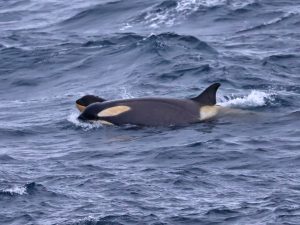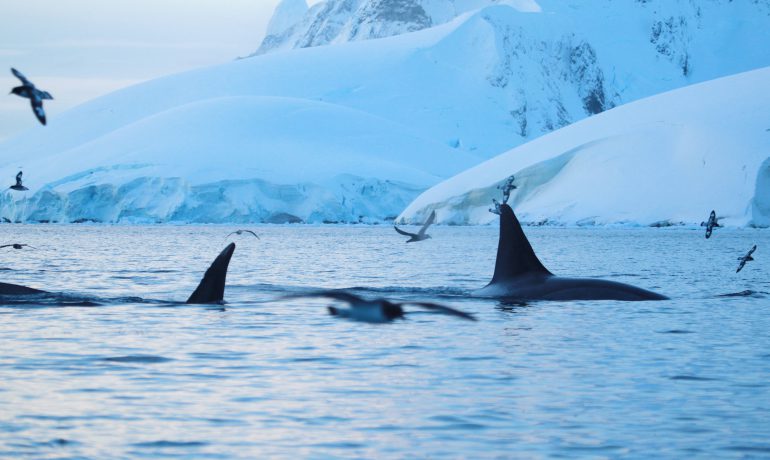In June this year, biologists of the 28th UAE took skin and fat samples from three killer whales for the first time as part of Ukrainian Antarctic research. Later, in cooperation with American colleagues, molecular genetic and other studies of these samples, which will allow us to learn more about the structure and state of the populations of these animals, will be carried out.

Also, during the observations of killer whales in the Lemaire Channel, Ukrainian scientists managed to comprehensively document them: take photographs for photo identification, make drone shooting and acoustic recordings of sounds.
“Working with killer whales is more difficult than working with whales. First, killer whales develop high speed and can disappear long before the boat arrives. Secondly, they are much smaller than humpback whales and spend much less time on the surface of the water. Their movements, unlike those of whales, are more complex and chaotic, which makes it almost impossible to predict their movements,” says Vadym Tkachenko, who took samples.
In total, in March-July 2023, Ukrainian polar explorers were lucky enough to observe killer whales six times in different areas of the western part of the Antarctic Peninsula – the region where Akademik Vernadsky station is located.

Three out of five killer whale ecotypes living in Antarctic waters are found in the area of Vernadsky station. These are type A killer whales, which reach the largest sizes and usually feed on other cetaceans, primarily Antarctic minke whales. They are rare guests near the station.
More often, we have killer whales that belong to two subtypes of type B. And although visually, in terms of pigmentation, they are very similar to each other, they differ in size, behavior, have different acoustic repertoires and different group sizes.
Type B killer whales can be distinguished by the following features:
- type B1 killer whales are usually larger in size, but live in smaller family groups (average – 7, maximum – 14 individuals) and feed mainly on pinnipeds;
- type B2 killer whales, on the contrary, are generally smaller in size, but occur in large groups (average 36, maximum 75 individuals) and prefer to feed on penguins.
These subtypes do not interbreed, although they live in the same region.
It was types B1 and B2 killer whales of that Ukrainian scientists managed to collect skin and fat samples.
It should be noted that our biologists use a crossbow with special arrows and tips to take a biopsy of cetaceans. These arrows do not penetrate deep into the skin of animals, they only allow to take a small tissue sample. This is one of the most common sampling methods in the world, during which the animals do not feel pain.


